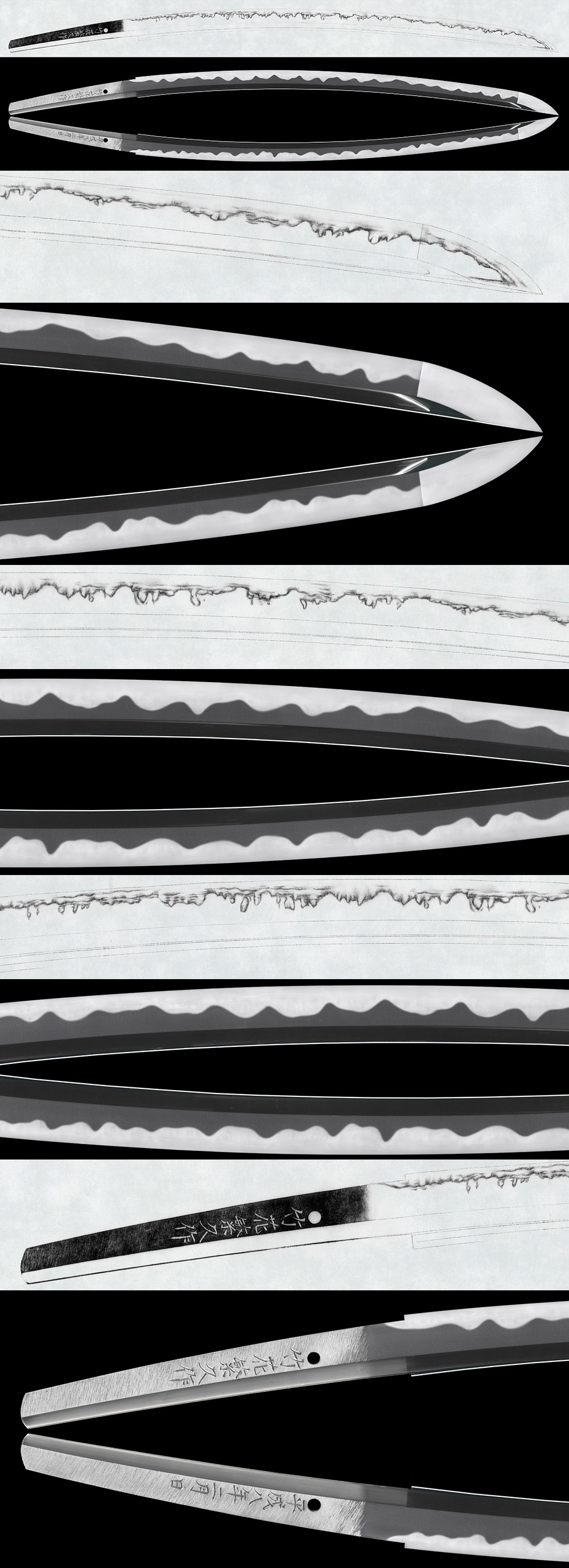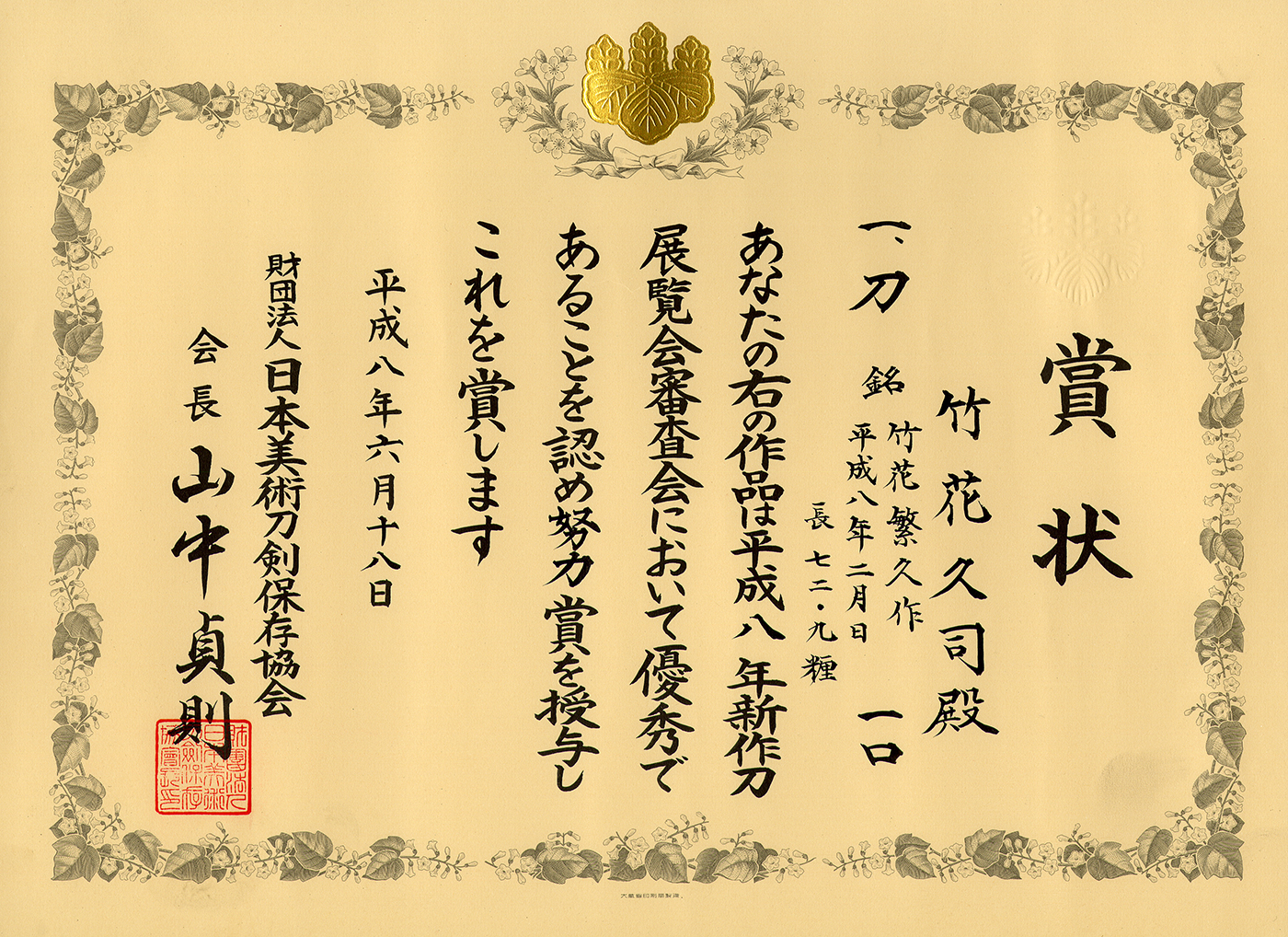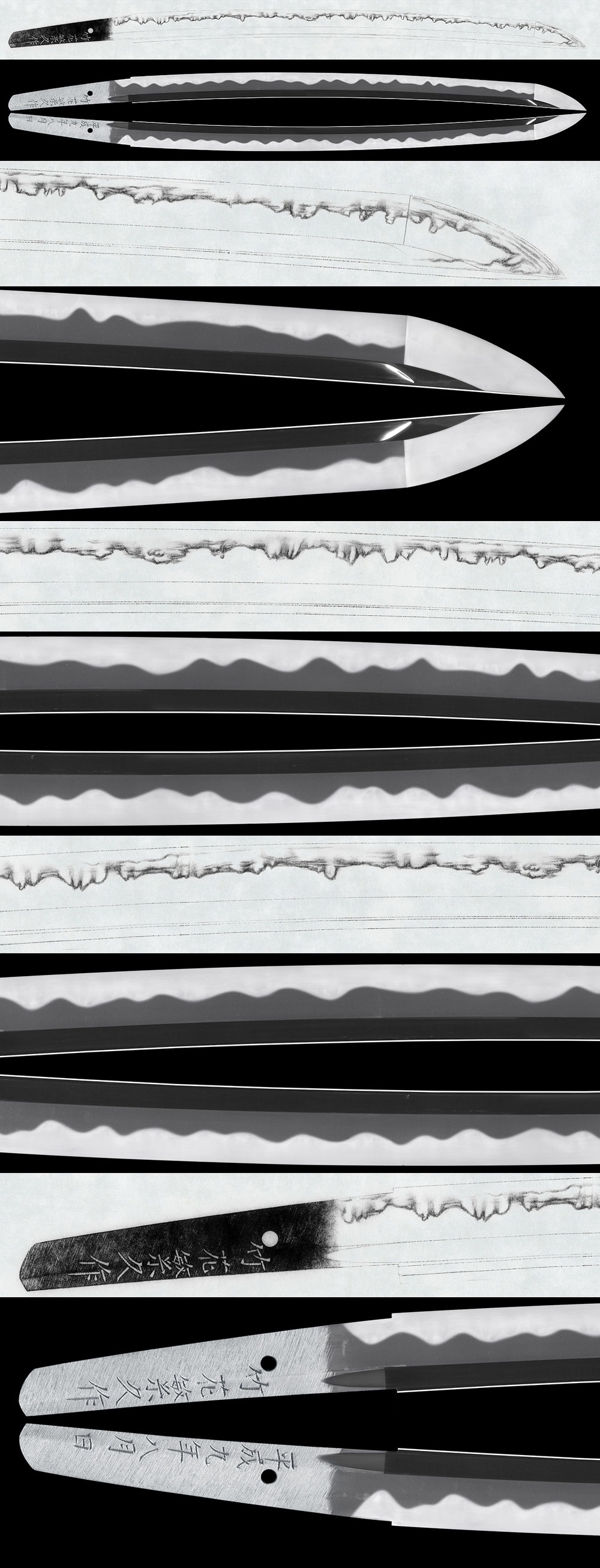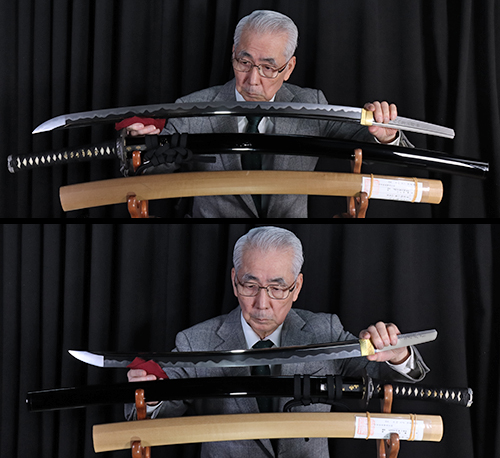Description
Dai Sho :
———————
Dai : Katana in Shirasaya, with Koshirae(NBTHK Effort Award certificate)
Signature: Takehana Shigehisa Saku
Heisei 8 Nen 2 Gatsu Hi (February, 1996)
竹花繁久作
平成八年二月日
We divide 4 sections for each sword as Saijyo Saku, Jyojyo Saku, Jyo Saku and Regular Saku.
This work is ranked as Jyojyo Saku for Takehana Shigehisa.
Habaki: Double gold foil Habaki
Blade Length: 72.8 cm (28.66 in)
Curvature: 2.9 cm (1.14 in)
Mekugi Hole: 1
Width at Base (Motohaba): 3.7 cm (1.46 in)
Width at Tip (Sakihaba): 2.96 cm (1.17 in)
Thickness: 0.70 cm (0.28 in)
Sword Weight: 940 g
Era: February, 1996
Shape: Wide blade with thick kasane, deep curvature, bo-hi engraved on both sides, and large kissaki.
Jigane: Small ko-itame hada, well forged, soft and beautiful texture.
Hamon: Made in nie-deki, slightly deep nioiguchi, gentle gunome-midare with irregular boshi.
Sunagashi and kinsuji work actively in the ha.
Features: Takehana Shigehisa was born on February 13, 1949. In 1972, he became an apprentice to swordsmith Sakai Ikkansai Shigemasa and, after receiving official approval to make swords, won the Excellence Award and the Effort Award at the New Sword Exhibition. He learned horimono carving from his master and produced fine works. His fellow disciples include Kasama Shigetsugu, Sakai Shigemasa, and Tsukamoto Kimasa. He created works modeled after Kanemitsu and Nagayoshi, leaving behind splendid examples of craftsmanship. According to what I heard, he was also eager in research, actually testing blades in battodo and studying their cutting performance.
Koshirae:
Tsuba: Mokko-shaped iron tsuba decorated with dragon design
Fuchikashira: Silver base with carved dragon
Saya (Scabbard): Black roiro lacquer saya, modern
Menuki: Gilt menuki, modern
Kozuka: Shakudo nanako ground with high-relief paulownia crest and gold iroe———————
Sho : Wakizashi in Shirasaya, with Koshirae
Signature : Takehana Shigehisa Saku
Heisei 9 Nen 8 Gatsu Hi (August, 1997)
竹花繁久作
平成九年八月日
We divide 4 sections for each sword as Saijyo Saku, Jyojyo Saku, Jyo Saku and Regular Saku.
This work is ranked as Jyo Saku for Takehana Shigehisa.
Habaki: Single gold foil Habaki
Blade Length: 57.3 cm (22.56 in)
Curvature: 1.1 cm (0.43 in)
Mekugi Hole: 1
Width at Base (Motohaba): 3.41 cm (1.34 in)
Width at Tip (Sakihaba): 2.99 cm (1.18 in)
Thickness: 0.63 cm (0.25 in)
Sword Weight: 675 g
Era: August, 1997
Shape: Wide mihaba of 3.41 cm, thick kasane, slightly deep curvature, long boshi, making it a magnificent work.
Jigane: Small ko-itame hada, well forged, beautiful texture.
Hamon: Nie-deki gunome-midare actively works up and down, with well-functioning ashi, running into midare-komi and returning strongly with a pointed tip. The hamon is bright and clear, with kinsuji and sunagashi in places, making it a once-in-a-lifetime masterpiece.
Features: Mr. Takehana was a disciple of Kasama Ikkansai Shigemasa, a strong-spirited swordsmith whose works stand out. He even purchased a house with growing bamboo to test-cut bamboo, applying this experience in his sword-making. This piece approaches the level of Kanemitsu, being bold and splendid — highly recommended.
Koshirae:
Tsuba: Mokko-shaped iron tsuba decorated with dragon design
Fuchikashira: Silver base with carved dragon
Saya (Scabbard): Black roiro lacquer saya, modern
Menuki: Gilt menuki, modern
Kozuka: Shakudo nanako ground with high-relief paulownia crest and gold iroe
———————
Aoi Art’s Comment: What appearance will this magnificent daisho show after 1,000 years? No one will be able to see it, but it inspires such expectations.
Historical Background: August 1996 – Prime Minister Ryutaro Hashimoto.
Honda Motor Co., Ltd. announced the Civic Type R.
TV Tokyo began airing the anime “Pocket Monsters” in April.
Katana: Comes with the Effort Award certificate from the NBTHK for the 1996 New Sword Exhibition.
Aoi Art estimation paper : whole Oshigata.












 日本語
日本語









